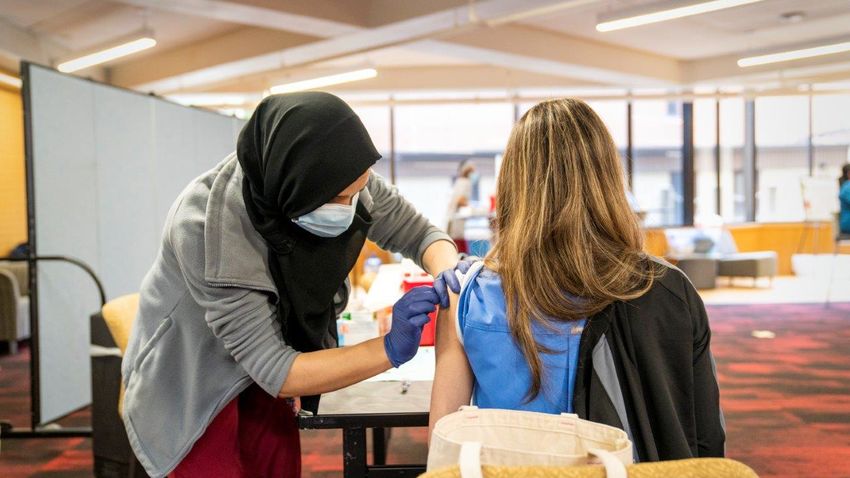
With the new rollout of the SARS-CoV-2 vaccines, we have reached a turning point in the COVID-19 pandemic, but we face another obstacle: vaccine hesitation. Recent surveys of the American public have indicated that only about two-thirds of Americans say they will be vaccinated. This is below the estimated 80 percent of the public we would need vaccinated to create enough herd immunity to protect us from infection. This hesitancy has become a new epidemic, fueled by inconsistent messaging, disinformation campaigns, conspiracy theories and mistrust of institutions charged with developing and distributing the vaccine.
So what do we do about this? As a risk communication researcher, I know that the messaging about the COVID-19 outbreak needed to be consistent, constant, and clear, coming from every level—federal down to local. Ideally, this should have started in February of last year. Instead, we got multiple messages from multiple messengers, which left the public to fill in the gaps using political beliefs, anecdotes seen on social media, and memes or false information. And despite new more consistent messaging coming from the new Biden Administration, it’s hard to counter all the misinformation that has occurred over the past year. Those who are vaccine hesitant come from different places. People of color, who have been affected by the epidemic disproportionately, may have understandable concerns about a vaccine when they feel they have been used in the past by science. We also have seen a decade of anti-vaxxer propaganda, compounded by the politicization of COVID containment, creating an illogical mistrust of science and medicine.
The consequence is a pocket of the population who will not be vaccinated. And I would argue that we shouldn’t spend too much effort on trying to convince those resistors. We can reach the target vaccination rate whether they get the shot or not.
In social science, there is a theory called Diffusion of Innovation, which helps predict the uptake of new ideas from new gadgets to medical breakthroughs. It theorizes that there are five types of people: innovators, early adopters, early and late majorities, and “laggards.” These groupings form a bell curve, where about two-thirds sit in the early and late majority categories. According to this theory, if you can convince early adopters—individuals who tend to be those in a community who are looked up to, respected, and who people want to emulate—early and late majorities will follow and say yes to the innovation more quickly. Soon, you have all but about 16 percent of the population vaccinated. This would bring us above the 80 percent needed to achieve herd immunity through vaccination.
It’s difficult to get the laggards to adopt new things, and expending time and resources to get them to do so doesn’t make sense. In the long run, if we can achieve herd immunity, that group is protected by those of us who will be vaccinated. And from a public health perspective, this is key to controlling an infectious disease.
Understanding this is important as we move forward with risk communication around the vaccine. In a climate where it's hard to find a single source of information that 80 percent of people trust, the best education strategy may be old school, passed from person to person. We have to use more community-based and neighborhood approaches to communicate with groups, enlisting people like pastors, teachers and block captains to spread the word. We have to use more personal level communication strategies to get people to think about and accept a new vaccine and make sure that the concerns and mistrust people have are validated and understood. Accurate and consistent messaging about the COVID vaccines should help when other factors influence late adopters in their decisions. Private enterprises like concert venues, sports arenas, airlines, and workplaces are likely to require vaccination. This presents it as a choice rather than a mandate—vaccinate to participate—and a community-based communication and education approach can help nudge people to take that step to be vaccinated confidently.
In the end, we will not get everyone vaccinated—those laggards tend to have their minds made up. But if we focus on using trusted voices in communities and understand how people need information, we may just be able to go out to eat in a restaurant again and safely spend time with our loved ones.
Sarah Bauerle Bass is an associate professor and director of the Risk Communication Laboratory.
